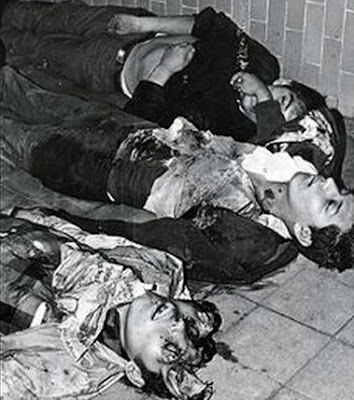Dentro del mundo de los pensadores agnósticos británicos, el sabio y bondadoso Bertrand Russell fue el más digno exponente de lo que entendemos por discrepancias religiosa. Russell fue un personaje muy fascinante además de un gran filosofo; fue un critico social y político. Él siempre mantuvo opiniones radicales y no convencionales sobre las religiones. Aún que yo soy católico siempre he admirado y respetado a este singular personaje. Russell escribió lo siguiente en 1967, “No creía en la vida en el más allá, pero sí creía en Dios, púes el argumento de primera causa me parecía irrefutable, pero a la edad de 18 años, poco antes de ingresar en Cambridge, leí la autobiografía de John Stuart Mill, en la cual explicaba como su padre le enseño que no se puede preguntar, ¿Quién me creó?, ya que esta pregunta conllevaría la de Quién creó a Dios. Esto me lleva a abandonar el argumento de la primera causa y a comenzar a ser ateo.”
Para lo que he vivido, BERTRAND RUSSELL
"Tres pasiones, simples, pero abrumadoramente intensas, han gobernado mi vida: el ansia del amor, la búsqueda del conocimiento y una insoportable piedad por los sufrimientos de la humanidad. Esta tres pasiones, como vendavales, me han llevado de acá para allá, por una ruta cambiante, sobre un profundo océano de angustia, hasta el borde mismo de la desesperación.
He buscado el amor, primero, porque comporta el éxtasis, un éxtasis tan grande, que a menudo hubiera sacrificado el resto de mi existencia por unas horas de ese gozo. Lo he buscado, en segundo lugar, porque alivia la soledad, esa terrible soledad en que la conciencia trémula se asoma al borde del mundo para otear el frío e insondable abismo sin vida. Lo he buscado, finalmente, porque en la unión del amor he visto, en una miniatura mística, la visión anticipada del cielo que han imaginado santos y poetas. Esto era lo que buscaba, y , aunque pudiera parecer demasiado bueno para esta vida humana, esto es lo que -al fin- he hallado.
Con igual pasión he buscado el conocimiento. He deseado entender el corazón de los hombres. He deseado saber por qué brillan las estrellas. Y he tratado de aprender el poder pitagórico en virtud del cual el número domina al flujo. Algo de esto he logrado, aunque no mucho.
El amor y el conocimiento, en la medida en que ambos eran posibles, me transportaban hacia el cielo. Pero siempre la piedad me hacía volver a la tierra. Resuena en mi corazón el eco de gritos de dolor. Niños hambrientos, víctimas torturadas por opresores, ancianos desvalidos, carga odiosa para sus hijos, y todo un mundo de soledad, pobreza y dolor convierten en una burla lo que debería ser la existencia humana. Deseo ardientemente aliviar el mal, pero no puedo, y yo también sufro.
Esto ha sido mi vida. La he hallado digna de vivirse, y con gusto volvería a vivirla si se me ofreciese la oportunidad."

Among the many agnostic British thinkers, the wise and good-natured Bertrand Russell was the most worthy exponent of what we mean by religious differences. Russell was a very fascinating character as well as a great philosopher; he was critical both on a social and political level. He always maintained a radical and unconventional views on religions. Even though I am Catholic, I have always admired and respected this unique character. Russell wrote the following in 1967, "I didn't believe in life after death, but yes I believed in God, well the first argument cause seemed irrefutable, but at the age of 18 years, shortly before entering Cambridge, I read the autobiography of John Stuart Mill, in which he explained how his father taught him not to question “Who created me?”, as that would lead to the question of who created God. This led me to abandon the argument of the first cause and I began to be an atheist."
For what I have lived, BERTRAND RUSSELL
"Three passions, simple but overwhelmingly strong, have governed my life: the lust for love, the search for knowledge and unbearable pity for the suffering of mankind." These three passions, as gales, have swayed me from here to there, via a changing route, over a deep ocean of anguish, to the edge of despair.
I have sought love, first, because it brings ecstasy, an Ecstasy so great that I often sacrificed the rest of my life for a few hours of this joy. So I searched, secondly, because it relieves loneliness, that terrible loneliness in which tremulous consciousness looks over at the edge of the world to see cold and unfathomable lifeless abyss. The anticipated vision of Heaven that many saints and poets have imagined and searched for, finally, because in the Union of love that I have seen in a mystic miniature. This was what I wanted, and although it might seem too good for this human life, it is that - at last - I have found.
With equal passion I have sought knowledge. I wanted to understand the hearts of men. I wanted to know why the stars shine. And I have tried to learn the Pythagorean power by which the number dominates the flow. Something that I have achieved, although it is not a lot.
Love and knowledge, both made it possible for me to be transported to heaven. But always compassion made me return to earth. It resonates in my heart the echo of cries of pain of hungry children, victims tortured by oppressors, helpless elderly, hateful burden for their children, and a world of loneliness, poverty, and pain make a mockery of what should be human existence. I wish ardently to alleviate the evil, but I cannot, and I too suffer.
This has been my life. I've found it worth living, and would gladly live it if it was offered me the opportunity."



























